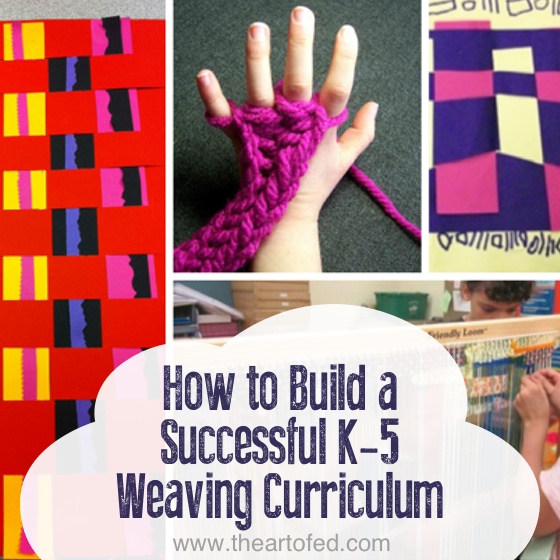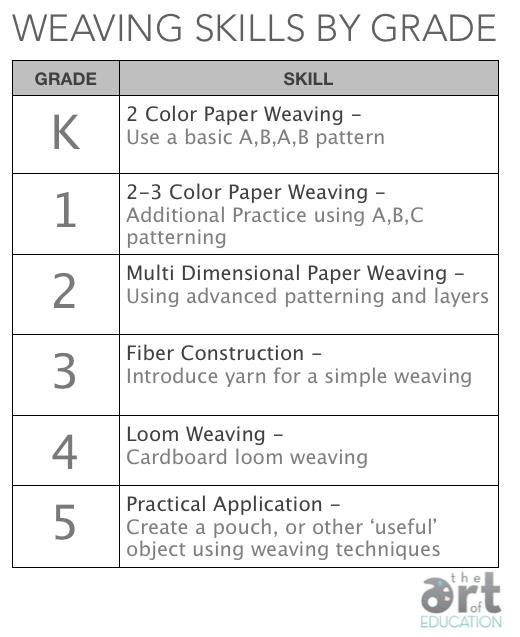Do you ever skip over an entire media group in your curriculum, simply because you feel like you don’t have time to incorporate it, or because you don’t feel confident with your own skill level? I did for awhile when I was in the classroom, especially with weaving and clay. In fact, I called it the “Selfish” art curriculum, which you can read more about right here.
The story goes that when I first started teaching, I did a few paper weavings with my younger students, and then completely abandoned weaving in upper elementary. I didn’t think I had the time, resources, or knowledge to do anything complex with weaving. Then, one of our art teachers held a weaving workshop where we all learned new techniques. The workshop gave me new excitement and motivation to tackle weaving. A few years later, cardboard loom weaving with 4th grade ended up being one of my very favorite projects of all time! If weaving is feeling daunting for you, then today I’ve got your back.
One of the first steps to fixing a “Selfish” curriculum is awareness. It can be difficult to identify a hole in your curriculum unless you map it out. (You know I love a good matrix.)
One of my favorite assignments in our Designing Your Art Curriculum online course is when teachers put together their “Grade Level Media” matrixes. This tool gives teachers a chance to analyze the mediums they teach and ensure there is an experience with each medium at each grade level (or in each course for HS art teachers). It’s eye-opening to map this out, see the gaps, and work on goals to achieve a dream curriculum. You can do the same!
The chart below shows my favorite way to scaffold weaving throughout the K-5 experience. You can take this example and run with it, depending on your favorite lessons and teaching style.
Here are some of the specific projects I like to use to go along with each grade level. A few are linked to older articles if you’d like to dig deeper. In addition, here’s everything we’ve ever published that’s related to weaving.
Project List
Kindergarten: Kente Cloth Weavings
1st Grade: Simple Paper Weaving (Picnic blankets)
2nd Grade: Multiple Layer Weaving
3rd Grade: Paper Plate Weaving or God’s Eyes
4th Grade: Cardboard Loom Weaving
5th Grade: Small iPod Pouch (if we had time!)
I am not suggesting you need to break out the jewelry materials every single year, but awareness and some planning tools can help you fill in your gaps. (I am talking to you, art teacher who has skipped clay for 3 years in a row!)
What are some of your favorite ways to teach weaving in your curriculum?
What media would you say is your weakest? Why?
Magazine articles and podcasts are opinions of professional education contributors and do not necessarily represent the position of the Art of Education University (AOEU) or its academic offerings. Contributors use terms in the way they are most often talked about in the scope of their educational experiences.






